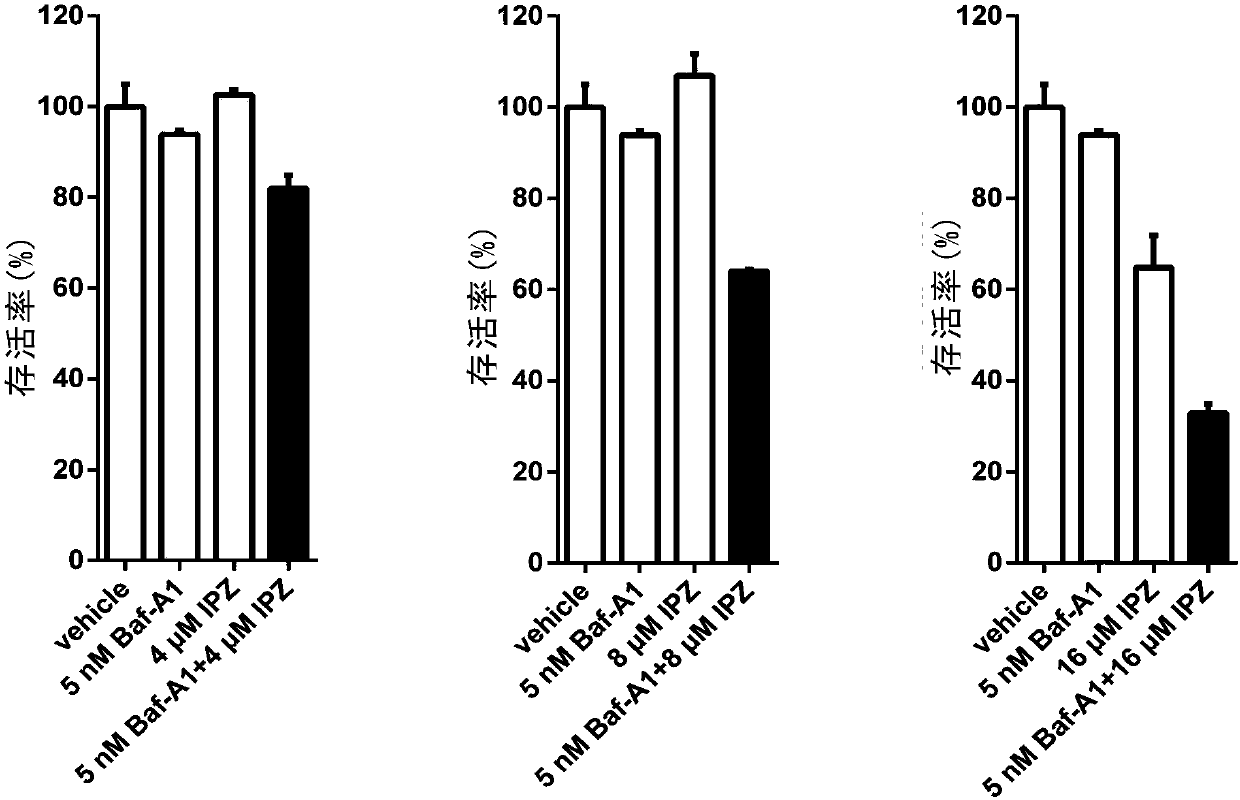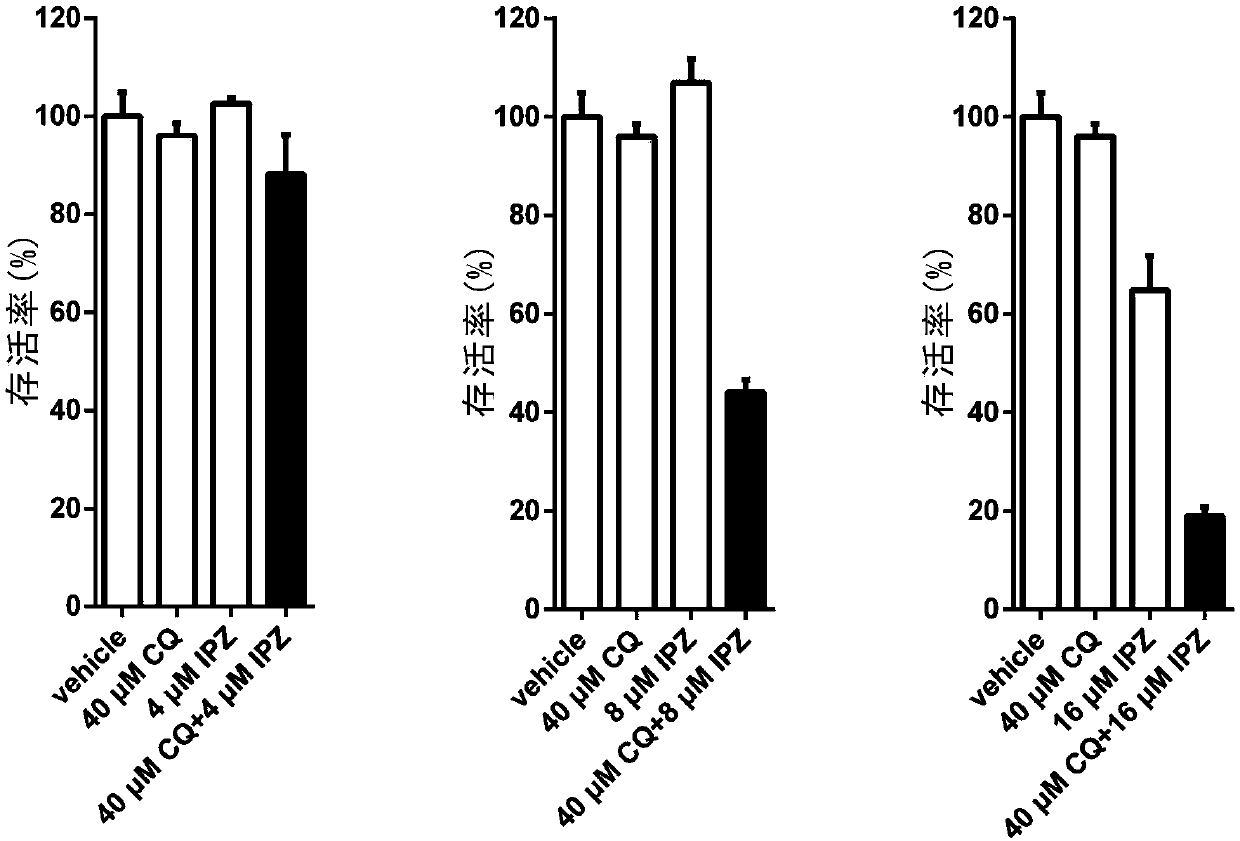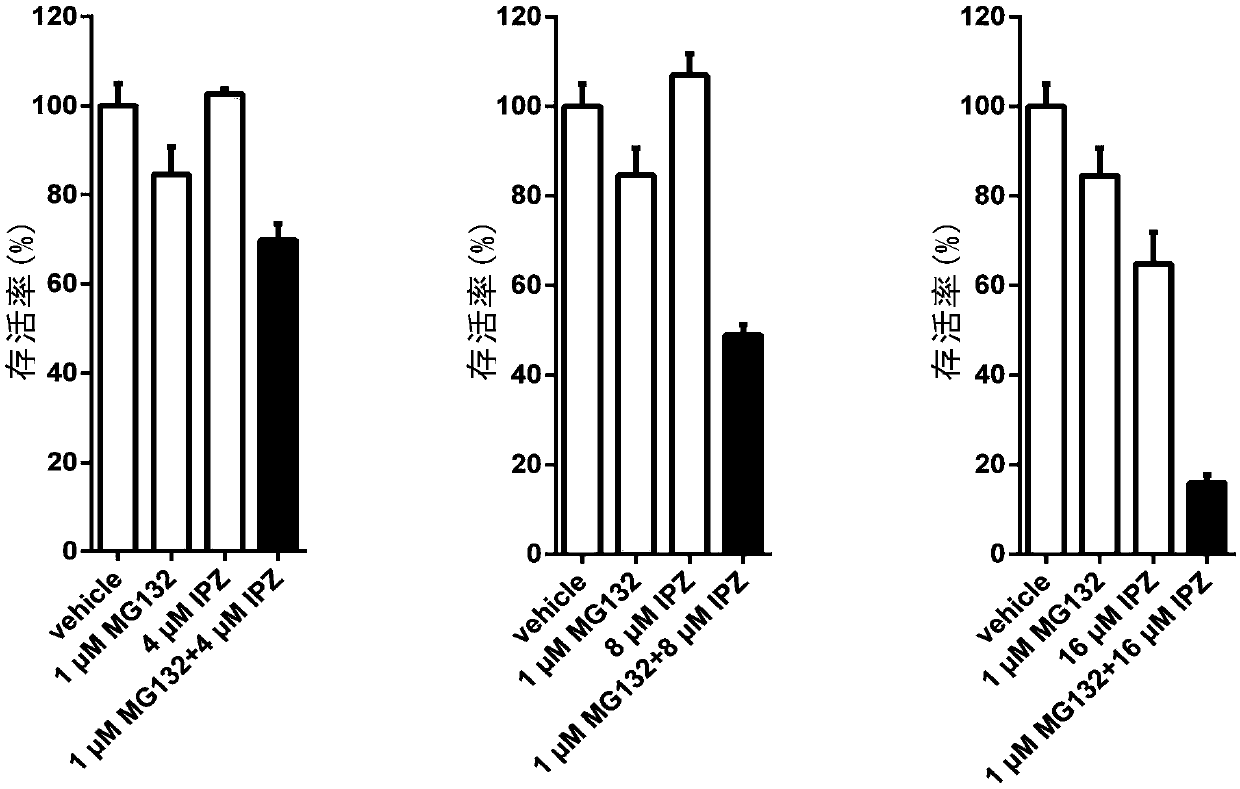Application of KPNB1 inhibitor and protein degradation pathway inhibitor in preparation of anti-tumor drugs
A protein degradation and protein inhibition technology, applied in anti-tumor drugs, drug combinations, pharmaceutical formulations, etc., can solve the problems of inconclusive anti-cancer efficacy and off-target effects, inability to inhibit nuclear transport, and limited drugs.
- Summary
- Abstract
- Description
- Claims
- Application Information
AI Technical Summary
Problems solved by technology
Method used
Image
Examples
Embodiment 1
[0078] Example 1, MTT method to detect the effect of KPNB1 inhibitor IPZ combined with inhibitors of protein degradation pathway on the survival of glioma cells
[0079] 1. Combined application of KPNB1 inhibitor IPZ and protein degradation pathway inhibitor Baf-A1
[0080] In this example, different concentrations (4uM, 8uM, 16uM) of IPZ were used for the KPNB1 inhibitor, and different concentrations of Baf-A1 were used for the inhibitor of the protein degradation pathway, as shown in the figure.
[0081] Glioma cell lines U87 and U251 were cultured in culture dishes with a diameter of 6 cm to about 30% confluence, and different concentrations of IPZ were added or not (blank control), and the cells were continued to be cultured for 4 days. Afterwards, they were cultured in a 96-well plate (manufactured by Corning, USA), with about 1500 cells per well and 150 μl of culture medium per well.
[0082] After the cells were treated with different concentrations of Baf-A1 alone or ...
PUM
 Login to View More
Login to View More Abstract
Description
Claims
Application Information
 Login to View More
Login to View More - Generate Ideas
- Intellectual Property
- Life Sciences
- Materials
- Tech Scout
- Unparalleled Data Quality
- Higher Quality Content
- 60% Fewer Hallucinations
Browse by: Latest US Patents, China's latest patents, Technical Efficacy Thesaurus, Application Domain, Technology Topic, Popular Technical Reports.
© 2025 PatSnap. All rights reserved.Legal|Privacy policy|Modern Slavery Act Transparency Statement|Sitemap|About US| Contact US: help@patsnap.com



